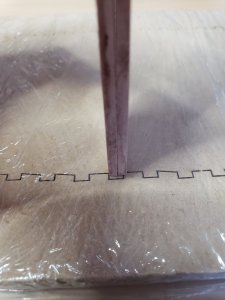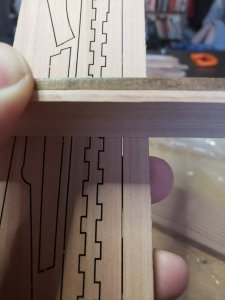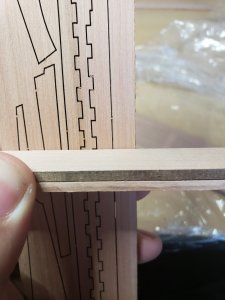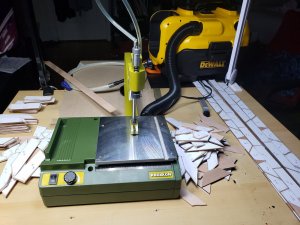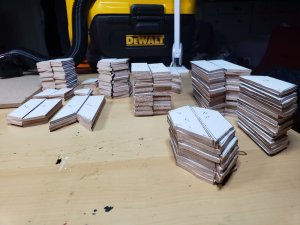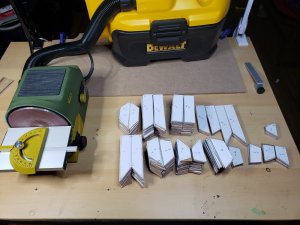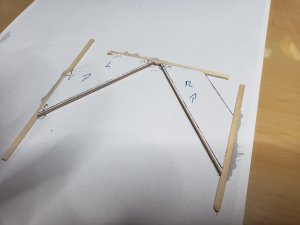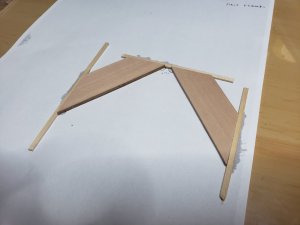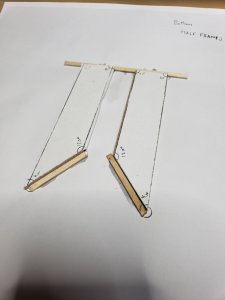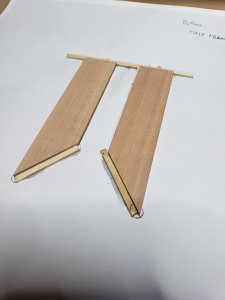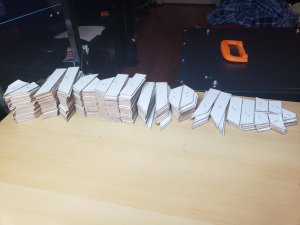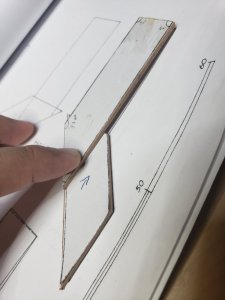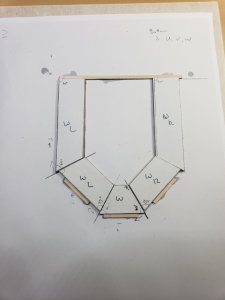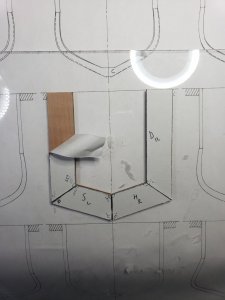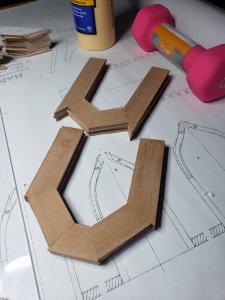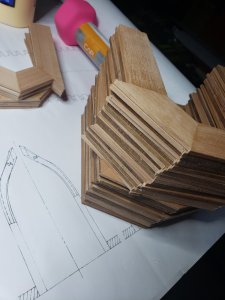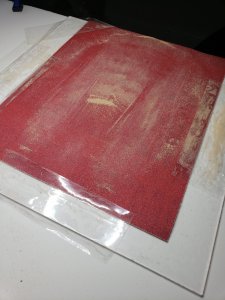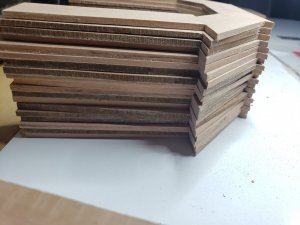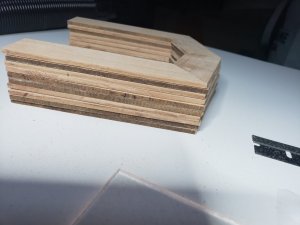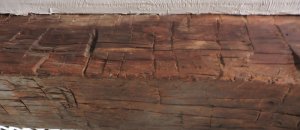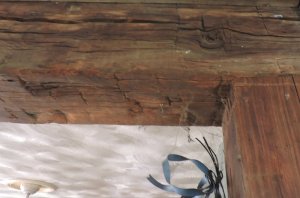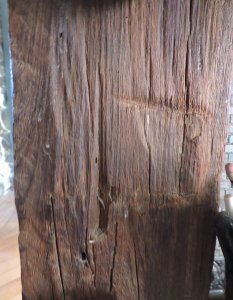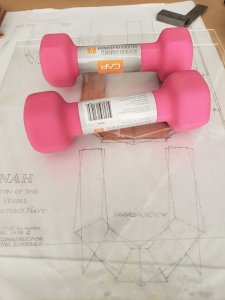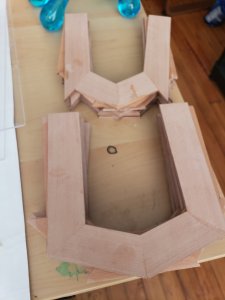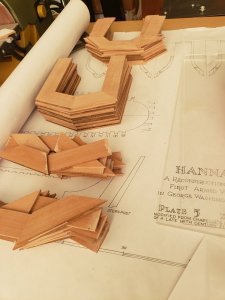Hi Gventura.
Nice to see you are building Lumberyards Hanna, I too are building Hanna I noticed you mentioned the strips of wood are not straight. I solved the
problem by using a piece of wood 18 inches long by 5/8 thick, then the important thing is to get it nice and straight, I then made some wooden
clamps to clamp the wood to using screws. Then take your piece of you are using for your build and clamp it down to your straight piece of wood leaving
about 1/4 of inch projecting past the edge all the way along, then run it through the saw slowly against the guide and cut off just enough to clean up the edge you can if you want to clean up the other side if you want to. I have other Lumberyard boats waiting to build and in all of them the wood supplied
is not straight. Dearest regards JANET
Hey Janet,
Thanks for the info! I've been following some of the photos of your build, it looks really good so far! Very nice frames.
Your suggestion is great, I should have thought about it myself earlier but I didn't and I've already cut everything. All my strips have been cut down to .8" with a little variance. I'm about to finish gluing my guides onto the wood and then I'll start cutting/sanding the pieces. I don't think the slight waviness will be much of an issue as long as my angles are right and the ribs are cut out properly and the bottom piece of each frame is at the same location.
How did you handle the thickness of the frames though. It looks like my frames are going to end up around .1" too thick for the framing jig. Should I just sand down the tops of the frames so they fit properly? I haven't actually checked them against the keel yet, I should probably do that because if they're too thick there I have a different problem.
Last edited:





